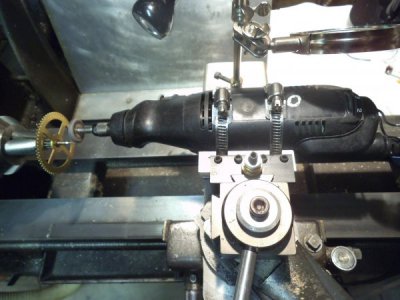Spent the weekend rebuilding the front axle of my Suzuki Samurai, which included replacing all the bearings. Went through my usual rigamarole of using a hammer and drift to knock the old races out of the hubs, and found my bearing driver set didn't have a driver that matched the bearing size I was using.
No big deal - just grind down an old race to just under the diameter of the hub bore, and use it to drive the new race in....and oh, hey! Good use for my lathe! Chucked that sucker up, and promptly ripped the edge off a tool bit. Oh yeah...duh! I learned this 20 years ago - can't use HSS to machine hardened steel.
In the interest of finishing this miserable job right then, I did a big no-no, and used an angle grinder on the race while still chucked up in the lathe and made it work.
But it got me thinking for the future, in case I run into this again. From reading here, it appears that I can use carbide tooling to machine hardened steel, but what do I do in the case of not knowing what the material is (beyond steel of some sort), or what type/depth of hardening it is? In this case, I couldn't care less what the surface finish is like...seeing as how an angle grinder produced a satisfactory part, lol. I just needed to pull a few thousandths off the OD. Is there some kind of "universal" carbide tooling I can get that won't cost a small fortune for something I may or may do again in the future?
No big deal - just grind down an old race to just under the diameter of the hub bore, and use it to drive the new race in....and oh, hey! Good use for my lathe! Chucked that sucker up, and promptly ripped the edge off a tool bit. Oh yeah...duh! I learned this 20 years ago - can't use HSS to machine hardened steel.
In the interest of finishing this miserable job right then, I did a big no-no, and used an angle grinder on the race while still chucked up in the lathe and made it work.
But it got me thinking for the future, in case I run into this again. From reading here, it appears that I can use carbide tooling to machine hardened steel, but what do I do in the case of not knowing what the material is (beyond steel of some sort), or what type/depth of hardening it is? In this case, I couldn't care less what the surface finish is like...seeing as how an angle grinder produced a satisfactory part, lol. I just needed to pull a few thousandths off the OD. Is there some kind of "universal" carbide tooling I can get that won't cost a small fortune for something I may or may do again in the future?


